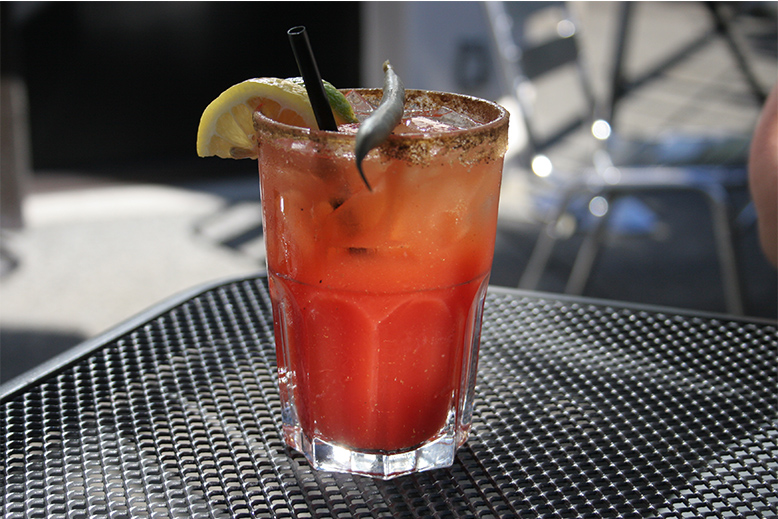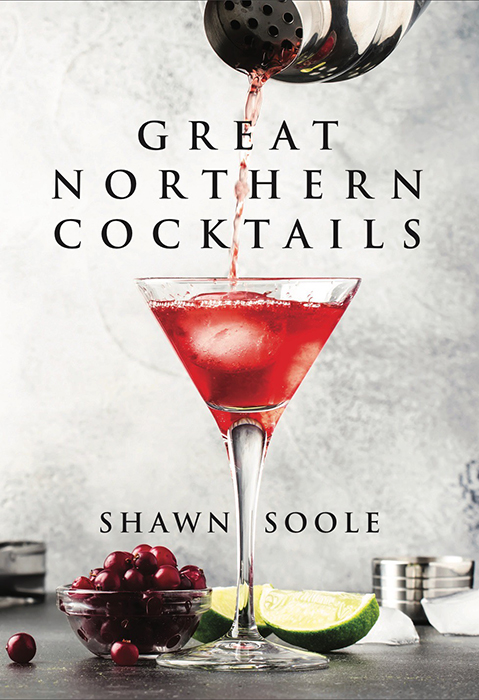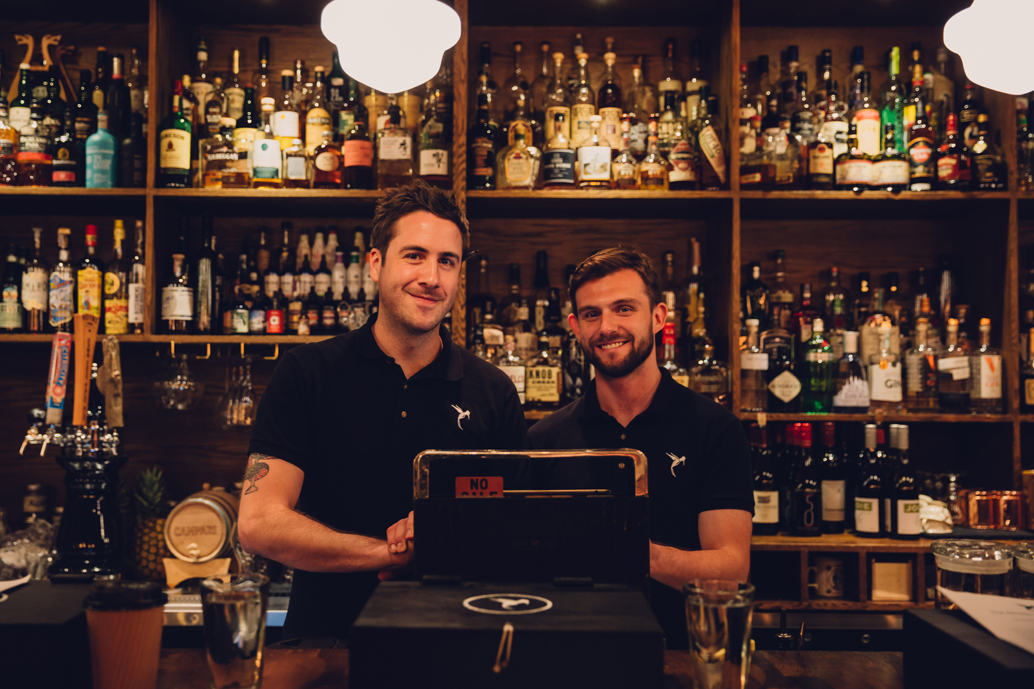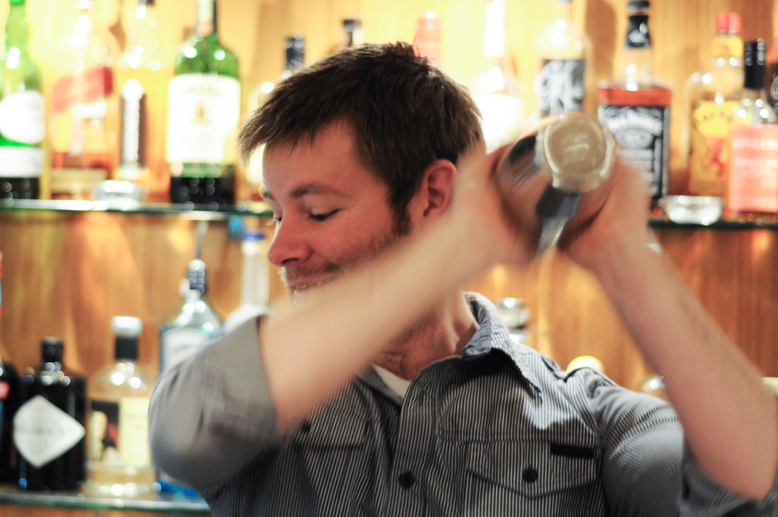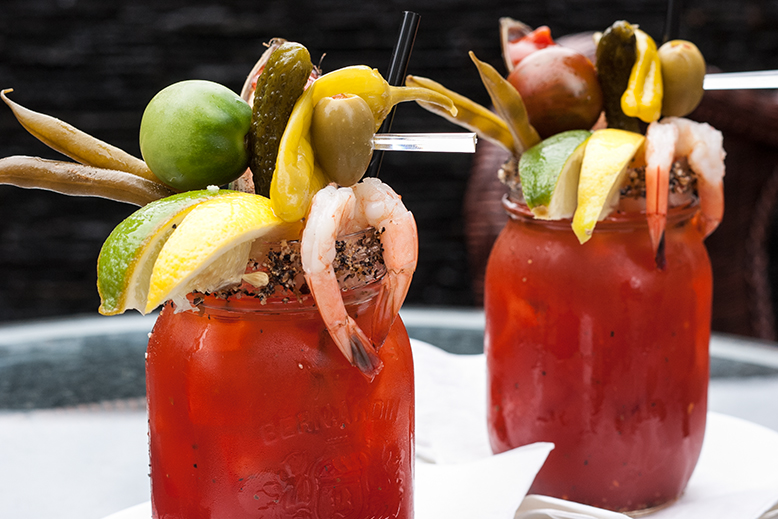Different cocktails have different philosophical traditions attached to them. At least this is how I see it. I still reject the notion that, just because something is served in a martini glass, it can be called a martini…or have the “~ini” suffix attached to it. A martini is gin, vermouth, and an olive (maybe a lemon twist), mixed with ice for a moment then poured in the glass. It’s not that the other so-called martinis are bad; some are quite nice, but they aren’t real martinis.
Part of this has to do with the history and the elegance of the martini. It is a cocktail that has earned its place in the pantheon of fine drinks, and doesn’t deserve to be “reinvented” by parvenu mixologist who finds themself suddenly installed in the position of power behind a bar.
The Caesar, however, that uniquely Canadian cocktail, is another sort of creature entirely. In order to elucidate why this is, I sat down with Liz McArthur, who runs a blog entirely devoted to drinking and reviewing Caesars all around the Victoria [hailcaesarvictoria.weebly.com]. Liz also works at CFUV 101.9 FM as a radio documentary and podcast producer, so you can be sure she brings a high level of impartial, journalistic integrity to her drink reviews.
The impression I get from our conversation is that, while the Caesar has a definite recipe of origin, part of the glory of the drink is that all of the elements can be tweaked to create a unique Caesar experience. We know that the Caesar was invented in Calgary, Alberta in 1969 by a man named Walter Chell. Chell was a hotelier and restaurateur who wanted a signature drink evoking the flavours of Italian cooking; specifically Spaghetti alle vongole: a pasta dish mixed in with tomato sauce and clams.
This impulse might seem suspect, however the result was delicious, and supremely popular. Hundreds of thousands of Caesars are consumed all over Canada every year. The original recipe is vodka, tomato and clam juice, Worchester sauce, a celery salt rimmed glass, and a celery stick, all served in a glass with ice. As I say, though, people love to mess with the recipe.
Unlike the martini, then, I think of a Caesar in the same terms as I think of Plato’s notion of the chair as it exists in the universe of forms. A Caesar, like a chair, can look any number of ways; its design can show innumerable variants. However, we always know when it is a chair and when it is not. Similarly, a Caesar can have any number of things in it, but we always know when it is a Caesar (and not a bloody mary, for example).
Liz notes that the Caesar at Fishhook (her absolute favourite) uses a prawnato juice, made with Fishhook’s very own in house prawn and tomato mix. The top of the drink also has prawns placed in it. Thus, we still get that powerful flavour of ocean and tomato, mixed with the vodka. yet it is rendered in a different, playful way.
At Sult, meanwhile, the Caesar is served with a boiling hot mini pierogi on it.
At the Jam Café the Caesar is called a “bourbonator” and is served with bourbon instead of vodka, and has a hot slice of bacon (as opposed to a cold greasy slice, Liz notes) inside of it. Is that still a Caesar? Yes, absolutely! The playful invention is part of the fun.
At Varsha the Caesar has fresh bacon and a pakora, and at Mo:Lé the Caesar has picked stuff in it.
It’s quite common for the green crunch stuff to be mixed around. Celery can easily be replaced with a pickled bean, or a pickle. And, from what I am told, even the replacement of vodka with tequila, whisky, or gin doesn’t seem to matter. What remains essential is the seafood/tomato vibe, and the various balances between sweet, fishy, salty, and sour. In fact, Liz points out, it is often the Caesars that are a little bit different and bizarre that stand out.
Still, if you want to have a very “elegantly executed” traditional Caesar then Ferris’ and Bartholomew’s Pub both do a great job, while respecting the tradition.
One difference between a martini and a Caesar, as Liz explains it, is that a Caesar is not necessarily an elegant drink. It is not the sort of thing one cause use to get well-oiled during a night on the town. Caesar is a meal unto itself. It is filling, and generally it isn’t possible to consume more than one or two; preferably while hung-over and in coordination with a greasy Sunday breakfast. I’ve certainly done this myself at John’s Place.
To be honest, I don’t entirely know why I think Martinis should stay pure, and Caesars should not. I don’t know why I am evoking Plato in order to defend this point. There ought to be a university course, or a Phd project undertaken on the importance of purity and variation in the field of mixology… but perhaps this is a problem for another day.
What I have learned, though, is that there is an entire subculture of people who blog, write, and make videos about Caesars. They all see it as a grassroots drink. Not something fancy, but more of an all-Canadian comfort item, perhaps like a liquid cup of KD or something.
Instagram @hailcaesarvictoria
Note: The Bearfoot Bistro World Oyster Invitational & Bloody Caesar Battle.
On Sunday Nov. 20 there will be a caesar battle at Cornucopia in Whistler
Fishhook
805 Fort Street
Victoria, BC
V8W 1H6
(250) 477-0470
Sult Pierogi bar
609 Yates Street
Victoria, BC
V8W 1L1
(778) 265-7858
Jam Café
542 Herald Street
Victoria, BC
V8W 1S5
(778) 440-4489
Varsha Indian Kitchen
101-1600 Government St.
Victoria BC
V8W 1Z3
(250) 590-6252
Mo:Lé
554 Pandora Ave,
Victoria, BC
V8W 1N7
(250) 385-6653
Ferris’ Oyster bar
536 Yates Street,
Victoria, BC
V8W 1K8
(250) 360-1824
Bartholomew’s Pub
777 Douglas Street,
Victoria, BC
V8W 2B5
(250) 940-3125
John’s Place
723 Pandora Ave,
Victoria BC
V8W 1N9
(250) 389-0711


